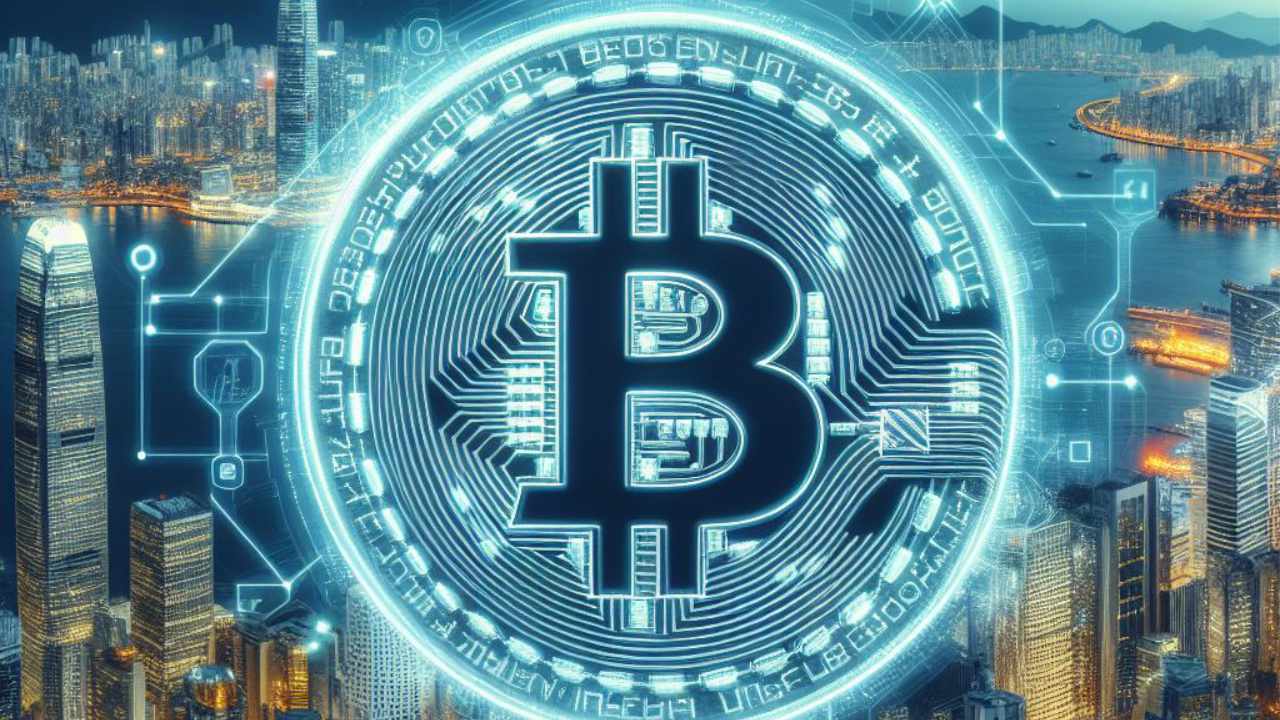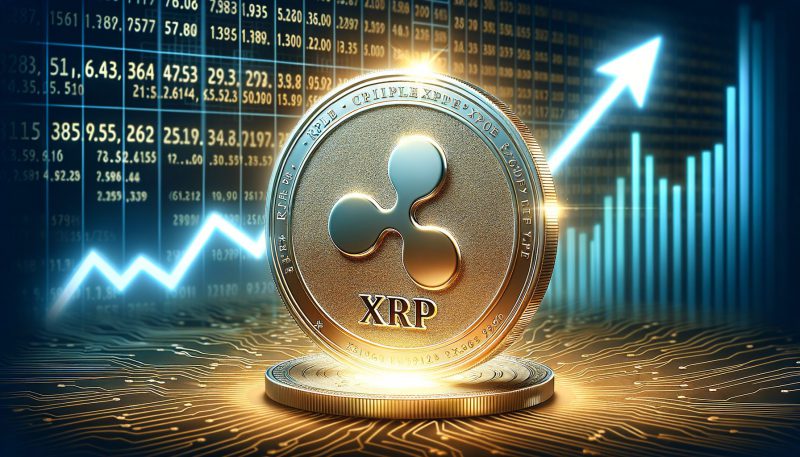XRP ETF: High Supply And Low Institutional Interest Raise Concerns

Table of Contents
The Abundance of XRP: A Supply-Side Challenge
The sheer volume of XRP in circulation presents a substantial hurdle for a successful XRP ETF. This abundance significantly impacts price stability and investor confidence.
Circulating Supply and Market Capitalization
- Massive Supply: XRP boasts a considerably larger circulating supply than Bitcoin (BTC) or Ethereum (ETH). This massive supply dilutes the value of each individual XRP token, making it potentially more susceptible to price volatility compared to cryptocurrencies with scarcer supplies.
- Price Volatility Risk: The large circulating supply increases the risk of price manipulation. A relatively small influx or outflow of XRP can disproportionately affect its market price, creating uncertainty for potential ETF investors. Price discovery becomes more complex and less reliable in such a high-supply environment.
- Comparison with other Cryptocurrencies: While Bitcoin's capped supply of 21 million is often cited as a key factor in its value proposition, XRP's total supply of 100 billion presents a stark contrast. Ethereum, while having a significantly larger circulating supply than Bitcoin, still features a considerably smaller total supply than XRP. This difference greatly influences investor perception and market dynamics.
Ripple's Ongoing Legal Battle
The ongoing legal battle between Ripple Labs and the Securities and Exchange Commission (SEC) casts a long shadow over the potential for an XRP ETF. The outcome of this case will significantly impact investor confidence and the likelihood of regulatory approval for any XRP-based exchange-traded fund.
- SEC Allegations: The SEC alleges that XRP is an unregistered security, a claim that Ripple vehemently denies. The legal battle centers on the classification of XRP and its distribution methods.
- Uncertainty and Regulatory Clarity: An unfavorable ruling could severely damage XRP's price and make it extremely difficult, if not impossible, to launch an XRP ETF. The lack of regulatory clarity surrounding XRP creates significant uncertainty for potential investors and ETF providers.
- Impact on ETF Approval: The uncertainty surrounding the SEC lawsuit poses a significant risk to the approval process for any proposed XRP ETF. Regulatory bodies may be hesitant to approve an ETF based on an asset with such significant legal and regulatory uncertainty.
Lack of Institutional Backing: A Demand-Side Issue
Beyond the supply-side challenges, the relatively low level of institutional investment in XRP further hinders the prospects of a successful XRP ETF.
Limited Institutional Holdings
- Low Institutional Adoption: Compared to Bitcoin and Ethereum, institutional investors have shown comparatively little interest in XRP. This is reflected in the relatively small percentage of XRP held by institutional wallets.
- Reasons for Low Interest: The reasons for this lack of institutional interest are multifaceted, including the ongoing legal uncertainty surrounding Ripple and the perception of XRP as a higher-risk investment compared to more established cryptocurrencies.
- Comparison to Bitcoin and Ethereum: The institutional adoption of Bitcoin and Ethereum has been significantly higher, reflecting the greater confidence and maturity these cryptocurrencies have achieved in the market. This contrast underlines the relative lack of institutional support for XRP.
ETF Demand and Investor Sentiment
The current demand for an XRP ETF is unclear, largely due to the aforementioned challenges. Investor sentiment towards XRP is also cautious, impacted negatively by the Ripple lawsuit and its large supply.
- Investor Hesitancy: The legal uncertainty and price volatility associated with XRP are deterrents for many investors, especially institutional players.
- Comparison with Other Crypto ETFs: The lukewarm reception to some other crypto ETFs highlights the inherent risks and challenges associated with this asset class. An XRP ETF faces an uphill battle in gaining traction in a cautious market.
- Media and Public Opinion: Negative media coverage and public skepticism surrounding the Ripple lawsuit have contributed to the negative investor sentiment towards XRP.
The Ripple Effect: Potential Consequences of a Failed XRP ETF Launch
A failed or significantly delayed launch of an XRP ETF could have far-reaching consequences for XRP and the broader cryptocurrency market.
Impact on XRP Price
- Potential Price Drop: A failed ETF launch would likely trigger a significant price drop for XRP, as investor expectations are currently partially based on the potential for increased demand from an ETF.
- Market Reaction: The market reaction would depend on several factors, including the timing of the announcement and the overall market sentiment at that time. However, a negative reaction is highly likely, potentially impacting other altcoins as well.
Implications for the Crypto Market
- Investor Confidence: A failed XRP ETF could further erode investor confidence in the cryptocurrency market as a whole, especially in altcoins.
- Knock-on Effects: The consequences could extend beyond XRP, potentially influencing the performance and investor sentiment towards other cryptocurrencies, particularly those with similar regulatory uncertainties.
Conclusion:
The high circulating supply of XRP, combined with the relatively low institutional interest and the ongoing legal battle with the SEC, presents substantial obstacles to the successful launch of an XRP ETF. While the potential rewards of an XRP ETF are attractive to some, investors must carefully weigh these significant risks. Thorough due diligence and a cautious approach are paramount when considering any investment related to an XRP ETF or XRP itself. Further developments in the Ripple case and a substantial shift in institutional interest are essential factors in determining the ultimate viability of an XRP ETF.

Featured Posts
-
 Three Star Wars Andor Episodes Now Available For Free On You Tube
May 08, 2025
Three Star Wars Andor Episodes Now Available For Free On You Tube
May 08, 2025 -
 Xrp Surges Past Bitcoin Secs Grayscale Etf Filing Response Fuels Crypto Rally
May 08, 2025
Xrp Surges Past Bitcoin Secs Grayscale Etf Filing Response Fuels Crypto Rally
May 08, 2025 -
 Wednesday Lottery Results April 9th Winning Jackpot Numbers Revealed
May 08, 2025
Wednesday Lottery Results April 9th Winning Jackpot Numbers Revealed
May 08, 2025 -
 Gewinnzahlen Lotto 6aus49 Mittwoch 09 04 2025 Jetzt Pruefen
May 08, 2025
Gewinnzahlen Lotto 6aus49 Mittwoch 09 04 2025 Jetzt Pruefen
May 08, 2025 -
 Xrp Regulatory Status Latest News And Impact On Investors
May 08, 2025
Xrp Regulatory Status Latest News And Impact On Investors
May 08, 2025
